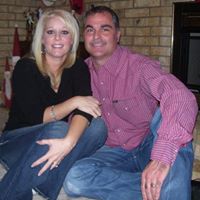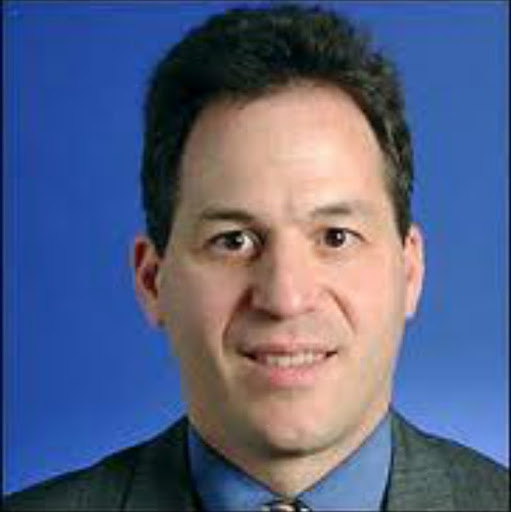Dale Lynne Henson
age ~70
from Lake Oswego, OR
- Also known as:
-
- Dale L Henson
- Dale Te Henson
- Dale R Henson
Dale Henson Phones & Addresses
- Lake Oswego, OR
- 15781 Simoni Dr, San Jose, CA 95127 • 4087296922
- Novato, CA
Work
-
Position:Professional/Technical
Education
-
Degree:Associate degree or higher
Us Patents
-
Method Of Protecting A Helmet Shell And Interrupting Airflow Around The Shell With A Removable Strip
view source -
US Patent:6553580, Apr 29, 2003
-
Filed:Jan 16, 2002
-
Appl. No.:09/887696
-
Inventors:Dale L. Henson - San Jose CA 95131
-
International Classification:A42B 106
-
US Classification:2410, 2422, 2425
-
Abstract:A method of protecting a helmet shell and interrupting airflow around a helmet utilizing an air flow interrupter and helmet shell protector strip. The strip is constructed so that it can be applied to a helmet after manufacture of the helmet shell itself. The strip includes an attachment mechanism which is generally an adhesive backing. This allows the strip to be easily removably affixed to the helmet surface. The attachment mechanism must have sufficient strength so that the strip does not separate from the helmet surface during normal use.
-
Hot Air Lamination Chamber For Medical Catheters
view source -
US Patent:7048819, May 23, 2006
-
Filed:Mar 8, 2005
-
Appl. No.:11/076245
-
Inventors:Dale L. Henson - San Jose CA, US
-
International Classification:B32B 37/00
-
US Classification:156 82, 156381, 156497, 156499
-
Abstract:A system of heat shrink lamination that uses one or more lamination chambers with forced flow of heated air from a central heating area. The central heating area includes at least one heating element. A fan situated at one end of the central heating area provides high speed air circulation by forcing the heated air down through hot air plenums in the lamination chambers. At the lower end of the lamination chambers, the hot air is returned through air flow ducts to the central heating area.
-
Tension Control System For A Continuous Winding Machine
view source -
US Patent:7891597, Feb 22, 2011
-
Filed:Feb 8, 2008
-
Appl. No.:12/069230
-
Inventors:Dale L. Henson - San Jose CA, US
-
International Classification:B65H 54/64
B21B 39/08 -
US Classification:2424381, 2424396, 57 11, 57352, 72 114, 72205
-
Abstract:A continuous winding machine uses embedded controllers to monitor and control the winding settings in maximum speed applications. Power is supplied to the embedded controllers from a main power source through a rotary transformer. The control system can be operated either through wired connections to a local computer or processor, or through a wireless system, or a combination of both, depending on the specific application. The machine uses a high speed, closed loop tensioning system that includes the filament supply spools and the mandrel supply and takeup spools. The control system menu includes the various winding operations useful to each user. The control system menu can be accessed remotely via computer, or by telephone.
-
Tension Control System For A Continuous Winding Machine
view source -
US Patent:7997521, Aug 16, 2011
-
Filed:Aug 3, 2010
-
Appl. No.:12/849790
-
Inventors:Dale L. Henson - San Jose CA, US
-
International Classification:B65H 54/64
B21B 39/08 -
US Classification:2424381, 2424396, 57 11, 57352, 72 114, 72205
-
Abstract:A continuous winding machine uses embedded controllers to monitor and control the winding settings in maximum speed applications. Power is supplied to the embedded controllers from a main power source through a rotary transformer. The control system can be operated either through wired connections to a local computer or processor, or through a wireless system, or a combination of both, depending on the specific application. The machine uses a high speed, closed loop tensioning system that includes the filament supply spools and the mandrel supply and takeup spools. The control system menu includes the various winding operations useful to each user. The control system menu can be accessed remotely via computer, or by telephone.
-
Three-Way Hot Air Divert Valve
view source -
US Patent:57462526, May 5, 1998
-
Filed:Feb 14, 1997
-
Appl. No.:8/799965
-
Inventors:Dale Henson - Santa Clara CA
-
International Classification:F16K 11085
-
US Classification:13762547
-
Abstract:A three-way hot air divert valve. The valve is mechanically similar to a normal divert valve, but includes elements made from refractory materials to provide thermal breaks so that heat in the hot air line does not adversely affect the moving parts of the valve. The refractory material will generally be a ceramic. The user chooses the particular setup of the valve, so that he can choose the direction of air flow to a waste air area.
Resumes

Owner
view sourceLocation:
San Francisco, CA
Industry:
Mechanical Or Industrial Engineering
Work:
Engineering By Design
Owner
Fairchild Semiconductor Jun 1982 - Jun 1985
Equipment Engineering Manager
Owner
Fairchild Semiconductor Jun 1982 - Jun 1985
Equipment Engineering Manager
Education:
Oregon State University 1978 - 1982
Bachelor of Science In Mechanical Engineering, Bachelors, Engineering
Bachelor of Science In Mechanical Engineering, Bachelors, Engineering
Skills:
Manufacturing
Product Development
Project Management
Engineering
Program Management
Integration
Cad
Continuous Improvement
Autocad
Lean Manufacturing
Matlab
Engineering Management
Microsoft Office
Microsoft Excel
Microsoft Word
Customer Service
Strategic Planning
Negotiation
New Business Development
Product Development
Project Management
Engineering
Program Management
Integration
Cad
Continuous Improvement
Autocad
Lean Manufacturing
Matlab
Engineering Management
Microsoft Office
Microsoft Excel
Microsoft Word
Customer Service
Strategic Planning
Negotiation
New Business Development
Languages:
Italian
English
English

Dale Henson
view source
Dale Henson
view source
Dale Henson
view source
Dale Henson
view source
Dale Henson
view source
Dale Henson
view source
Dale Henson
view sourceName / Title
Company / Classification
Phones & Addresses
President
Henson Tech Inc
Design Engineers
Design Engineers
2157 STE G OTOOL AVE, San Jose, CA 95131
4083241500
4083241500
President
EXTREME ROBOTICS, INC
2372 Qume Dr, San Jose, CA 95131
Wikipedia References

Dale Henson

Dale Henson
view source
Dale Henson
view source
Dale Henson
view source
Dale Henson
view source
Dale Henson
view source
Dale Henson
view source
Dale Henson
view source
Dale Henson
view sourceMyspace
Googleplus

Dale Henson

Dale Henson

Dale Henson

Dale Henson

Dale Henson
Flickr
Youtube
Classmates

Dale Henson
view sourceSchools:
Paseo Verde Elementary School Peoria AZ 1999-2001

Dale Henson
view sourceSchools:
Dye High School Flint MI 1950-1961
Community:
Alfred Evans, Esta Ormiston, Sue Enlow, Dayron Jones, Karen Gondol

Dale Henson
view sourceSchools:
Dye High School Flint MI 1961-1965
Community:
Alfred Evans, Esta Ormiston, Sue Enlow, Dayron Jones

Dye High School, Flint, M...
view sourceGraduates:
Dwight Neisler (1951-1961),
Richard Cooper (1952-1961),
Dale Henson (1961-1965),
Phyllis James (1952-1956),
Wayne Robinson (1952-1956)
Richard Cooper (1952-1961),
Dale Henson (1961-1965),
Phyllis James (1952-1956),
Wayne Robinson (1952-1956)

Franklin County High Scho...
view sourceGraduates:
Dale Henson (1973-1977),
Rebecca Payne (1996-2000),
Connie Dews (1972-1976),
Wix Criscillis (1983-1987)
Rebecca Payne (1996-2000),
Connie Dews (1972-1976),
Wix Criscillis (1983-1987)
Plaxo

Dale Henson
view sourceLas Vegas, NVGLVAR

Dale Henson
view sourceCOO at GLVAR

Dale Henson
view sourceWillamette Valley Bank

Ms. P. Dale Henson
view sourceOrlando, FL
Get Report for Dale Lynne Henson from Lake Oswego, OR, age ~70
















